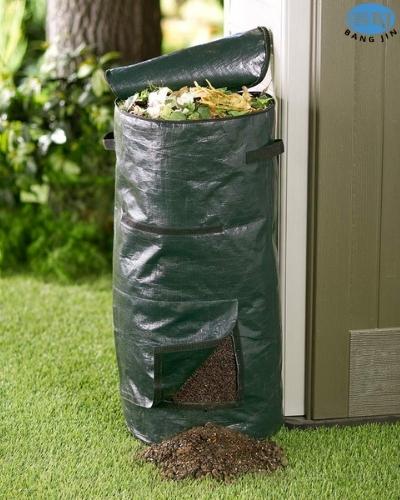Compost sacks or growers may be used to produce a wide variety of vegetables, fruits, salad greens, and herbs, resulting in a large home-grown yield at a low cost.
Your compost sacks, and growers will thrive in greenhouses or even in a bright, protected site in your yard, where they will get enough of sunshine time to help them flourish.
These compost bags are disposable, ecologically friendly, and recyclable, and were designed with the biosphere in mind.
This blog post will help you filter through all of the various options of what kinds of plants you can grow in compost sacks in and get the best gardening experience that will fulfill your desire.
Kinds of Plants Can Be Cultivated in A Compost Sacks
Grow bags are ideal for veggies with shallow roots. The most recommended ones are as follows:
Vegetables |
|
Fruits |
|
Flowers |
|
Houseplants |
|
In the spring, you will put 2 to 3 plants in each bag. It is better to cut across the width of the sack and seed salad greens in rows.
Why Use a Compost Sack?
- Pots are bulky and cumbersome to transport. Grow bags are small and light. Fabric pots are ideal for growing on a balcony, rooftop or anywhere where load is a concern or where you may need to relocate the pots throughout the growth season. You simply have to contend with the mass of the dirt.
- They are airy and well-draining. Unlike plastic, the cloth allows air to reach the roots of the plants, preventing the soil from becoming wet. It’s difficult to overwater them.
- They keep the roots of the plants from becoming entangled. When a root touches the container’s edge, it is exposed to drier soil and more air. That root stops sprouting rather than circling the container and suffocating the plant.
- This is known as “air pruning,” and it promotes the plant to grow new roots, resulting in a healthy root system with numerous little root tips that can absorb water and nutrients rather than a few large roots that choke it. The plant can also devote more energy to top growth. Many growers say that plants grown in grow bags outperform those grown in plastic pots.
- In the summertime, the soil is colder. In the heat of summer, black plastic containers warm up. Heat can leave because the bags can breathe. Because the felt-like fabric is warmer than plastic, the soil stays a little warmer when the weather cools.
Benefits of Cultivating in Compost Sacks

Usage of a compost sack while cultivating plants is one of the most popular methods nowadays. This method has various advantages, but one that stands out above the rest is how easy it may be. Let us look a some of them:
- Compost sacks save time since they include handles that allow them to be removed from the pile or bin before the completed compost has dried up inside.
- The compost sack can be composted in a compost pile or thrown into the garbage. This is beneficial since you won’t have to be concerned about them languishing in your trash for days before being collected.
- It requires less than five minutes to complete and involves very little effort on your side.
- Nutritious root structures are formed since they were not cultivated in a container, roots are much less prone to spiral, a condition known as root bound. This makes pruning the plants much easier.
- Any odors will be controlled by the decomposition process, so there’s no need to wait until garbage collection day to dispose of them.
- Compost sacks helps to manage the temperature. When put in the sun, plastic containers can become quite heated. You won’t have to bother about your compost sack scorching because they are composed of permeable fabric. The compost sacks fabric allows excess heat to dissipate readily.
- You can transfer them anywhere as the compost sacks are simple to transport because they are lightweight than plastic containers and feature grips to let you carry them about.
Growing Tips in Compost Sacks
- Keep the compost in the sack from becoming too compressed by tossing and kneading it like a cushion.
- Keep in mind that each root ball’s tip should be slightly below the sack’s top.
- Water thoroughly and label. Maintain the compost humid, and when blooms show, nourish plants like aubergines, tomatoes, cucumbers, and peppers with a high-potash fertilizer.
- Compost sacks require more regular watering than a plastic container since they are porous and drain quickly. If you are using them indoors, place them on a big saucer to catch any spills.
- Tomatoes, for example, are taller plants that require support. Put a cane in the bag, knot the plant to it, and secure the cane to a frame.
- The decent compost sacks last a long time. They are tough and may be used for dragging wood, transporting compost or mulch, or as a harvest basket when they’re not supporting a plant.
- Other advantage of biodegradable compost sacks is that they decompose in less than 30 days without the need of chemical additives like degradable plastics, which take years to decompose. This implies that, when done correctly, these sorts of compost materials will not pollute our national environment.
Conclusion
Thus, you can perceive that you can plant various types of plants in a compost sack whether it comes to household or even horticulture. They are not only light; however, they also avoid engulf of water and promote healthy, regulated root development.
A compost sack is an excellent alternative for managing indoor and outdoor trash as well as growing veggies or plants on your terrace, balcony, or any other place.

